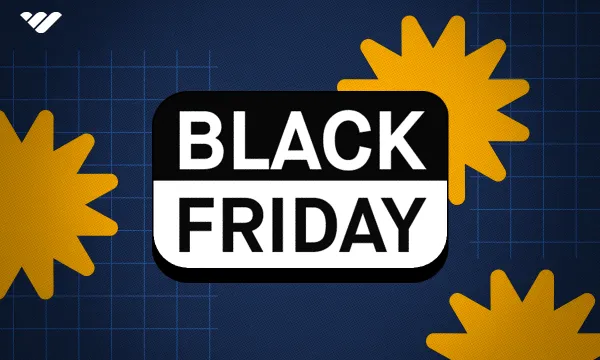Be honest—how many hours in your life have you spent scrolling through TikTok or YouTube videos? Personally, I'm afraid to even try to estimate. But have you ever wondered how much money those hours spent scrolling turned into?
After all, every single video, reel, and post is content created by a person, and, if that person is a content creator, then they're making money just by your view. The creator economy is alive and well, and even if you don't actively support any creators, just engaging with their content translates to them making money.
Being a content creator is not some exclusive club, by the way. If you've got ideas, you can turn them into money with Whop in a matter of minutes.
Some creators earn seriously big bucks from monetizing their content. But exactly how big can those big bucks be, and is it all worth your trouble? We'll take you through the ins and outs of making money as a content creator to give you a better idea.
What's the Average Income of a Content Creator?
We've established that content creators are capable of making good money. Look at people like MrBeast—his entire brand brings in around $700 million a year. That's one end of the spectrum, but what about the average content creator?
Well, first, we have to define what average even means in this situation, and that's not easy to do. There's no singular definitive answer to the question. It depends on what type of content you create, how much content you can put out, and how many viewers you have.
Some estimates put United States-based content creators at roughly $23 to $37 an hour, or between $49,000 and $79,000 per year.
However, those figures really aren't going to give you an accurate picture of the content creator market unless you somehow end up being the perfect middle ground in every scenario. Your income is going to depend on how you monetize your content, your target audience, and on the platforms you choose to use for content creation.
The variables are so wild that you'll have to keep reading to get a true idea of how much you could make as a content creator.
Content Creator Income Across Different Social Media Platforms:
As mentioned, one of the first variables to consider is the platform. Between Instagram, YouTube, TikTok, and many other platforms, there are so many different types of content, and, most of all, different options for monetization.
Different types of content are more fitting for some platforms than others. Every content creator needs to study these differences carefully and figure out which platform—or platforms—are best for them, and which ones their content is most likely to generate views on.
Here are a few of the most popular platforms, and how much money you can make on them.
How much money do content creators make on TikTok?
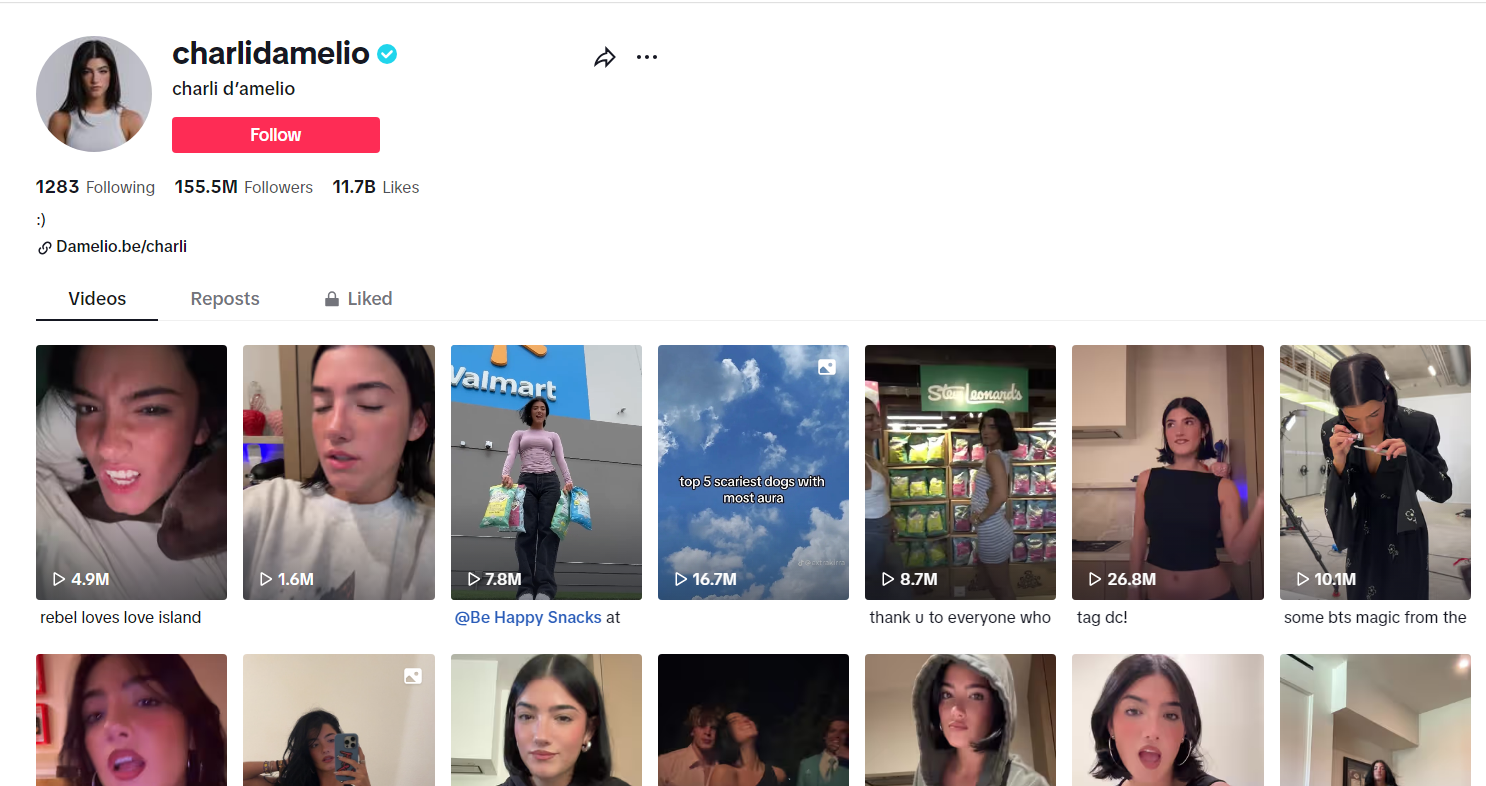
TikTok may only be the fifth most popular social media platform (behind a few others we'll discuss), but it's still a popular option for content creators. The average TikToker makes between $15,000 and $25,000 per year. While this isn't quite a full-time salary, it's definitely a good incentive to get started.
TikTok taps into a young demographic, which can make it a good option for creating an engaged fanbase that is also willing to spend some money outside of just watching videos. Take a peek at our 100+ TikTok statistics to give you a better idea of how good it might be for your own journey into content creation.
There are a few different ways to make money on TikTok. Here is roughly how much you can make on TikTok for each of the most common sources:
- If you qualify for the TikTok Creator Fund, you can earn between $0.02 and $0.04 cents per 1,000 views on your videos.
- If you go live on TikTok, viewers can send you gifts. These gifts can be converted into "Diamonds," which can then be turned into cash at a rate of $0.05 per Diamond. Just keep in mind that you can't withdraw less than $100 worth!
- Brand partnerships and affiliate marketing can bring in money once you have an established audience. The amount you get paid would be determined by your specific analytics and would be decided between you and the brand.
- You can also dip your toes in affiliate sales through the TikTok Shop, earning money for purchases made when you include the link in your post.
- Selling merch is always a good way to make money (while also making your audience happy). How much you'd earn would depend on what you sold, the platform you sold it through, and what you set your markup as. Print-on-demand products are commonly used for merch.
How much money do content creators make on YouTube?
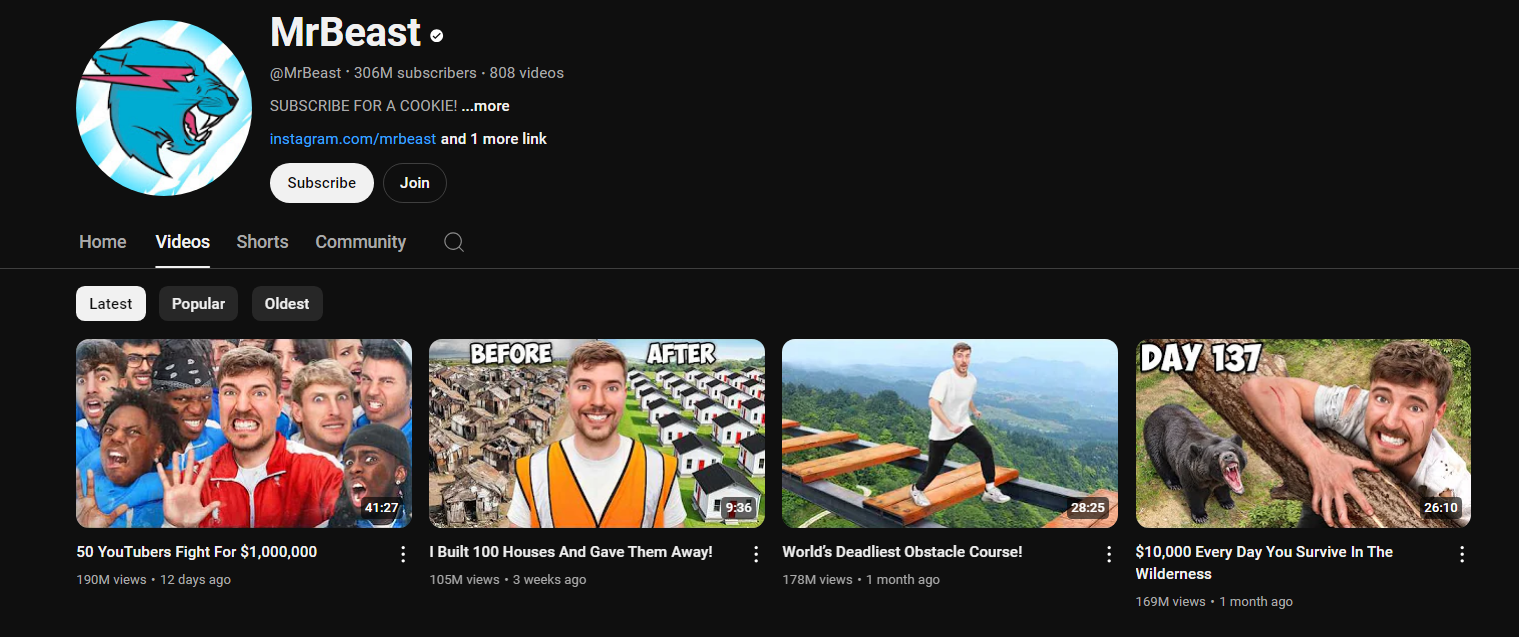
YouTube is a giant in the content creation sphere, and it's not going away anytime soon. YouTubers were the trendsetters of monetizing video content, fighting the hard fight over a decade ago to hammer out the value of ad revenue and brand marketing. With 2.5 billion active users every month, it's no surprise that there's money to be made here.
How much you can make specifically depends on what niche of YouTube content you're creating, and how ad-friendly it is. The median income for someone who dedicates themselves to YouTube as a full-time job is around $60,000 a year. Still, it's important to note that most YouTubers don't qualify for monetization because their channels are too small.
Here are the various channels through which you can monetize your YouTube videos.
- Content creators on YouTube usually earn between $0.01 and $0.03 per ad view, but some content may be preferable to advertisers and can earn up to (and above) $0.18 per view.
- With YouTube Premium, viewers pay a monthly fee so they don't see ads. Creators then get a share of the revenue based on their individual watch time.
- Channel memberships allow subscribers another way to support their favorite creators in exchange for various perks. Memberships can be set at any price but typically stay under $4.99 per month.
- During live streams, viewers can give creators Super Chats, Stickers, and Thanks. Each costs a fee, which the creator receives part of.
- Similar to TikTok, brands can pay YouTubers to promote their products. How much you can earn depends on you and the brand.
- YouTube also allows affiliate marketing links as long as they're publicly declared, meaning you can make a commission on sales of products you direct your viewers to.
- You can sell merch, and YouTube even has a feature that will show your merch for sale beneath a video.
How much money do content creators make on Instagram?
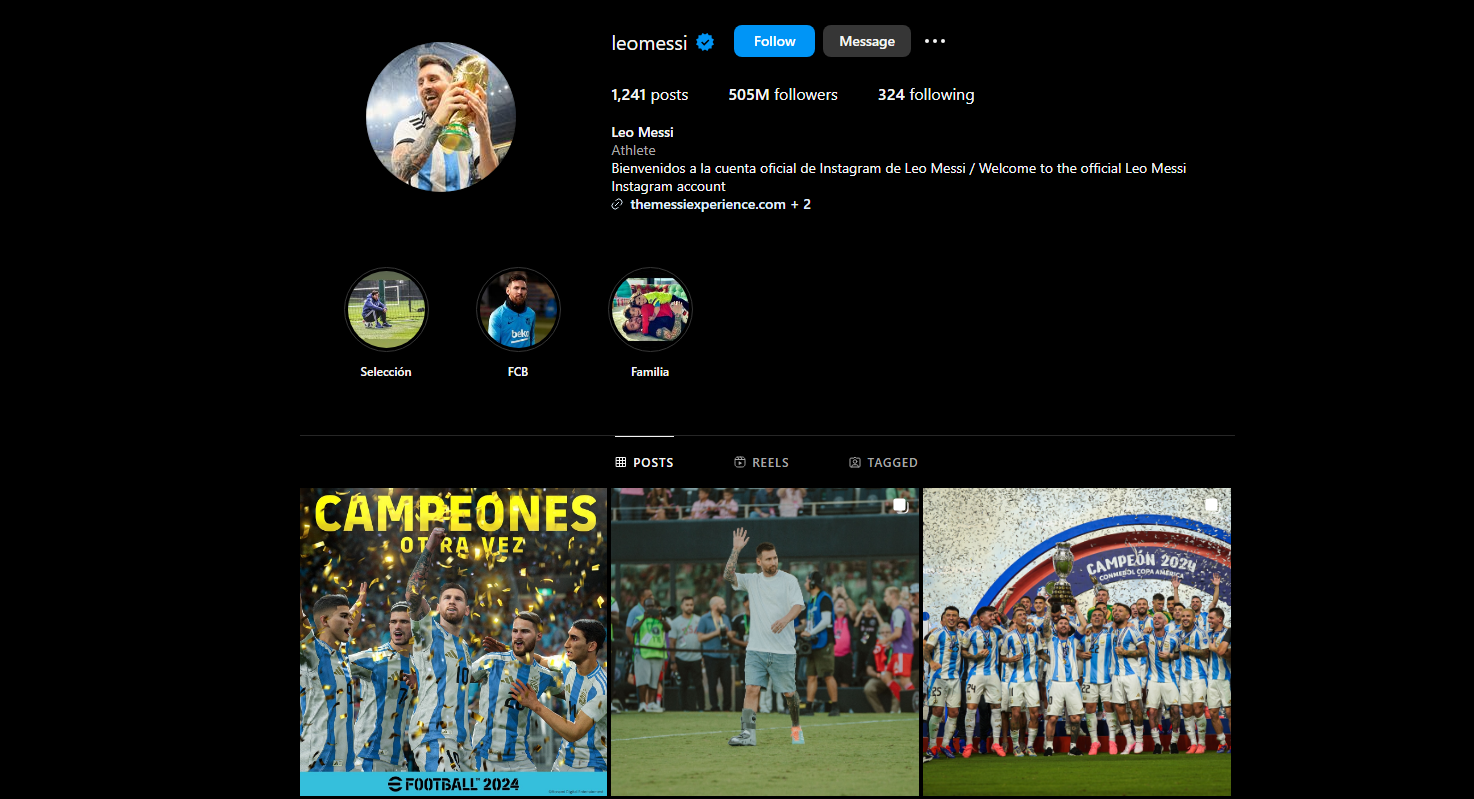
Unlike TikTok and YouTube, Instagram started primarily as a photo-sharing platform, but these days, it's a mix of both photos and videos. Over the years, Instagram has developed its own version of short-form video content called Reels and added features for live streaming, making it more similar to its competitors.
Creators with between 1,000 and 10,000 followers can make an average of $2,970 per month on the platform, or just over $35,000 per year, but it all comes down to brand partnerships and other methods of earning money.
Unlike Youtube and TikTok, Instagram relies more heavily on outside monetization, and many of its most influential stars were celebrities with or without the platform anyway—like Leo Messi, pictured above. However, thousands of newer creators make their money primarily on Instagram.
Here are the most common options for making money on Instagram:
- Brands can pay influencers to make sponsored posts. These can involve grid posts, Instagram Stories, or Reels. The rate depends primarily on the reach and engagement that you as the creator typically get.
- You can include affiliate links in your posts and drive sales toward products you get a commission on.
- During live streams, viewers can give badges as gifts. After Instagram takes a cut, the rest of the revenue is yours.
- Instagram also has a new feature for subscriptions that lets you offer exclusive content to subscribers who pay a monthly fee.
What Type of Content Makes the Most Money?
Okay, let's get down to it. You probably want to know what will make you the most money, and we're ready to spill the beans.
We're going to break it down for you by looking at each type of content, how much money there's to be made from each type, and what platform is best suited to it. All of that stuff will help you figure out which niche of content creation works best for you.
A quick tip: Don't forget that diversifying your income to multiple platforms is always a good idea, too. You aren't limited to just one type of content or just one platform. For instance, outside of posting videos on YouTube, you can also start up a paid community and earn more (all the while keeping your followers happy).
Written content
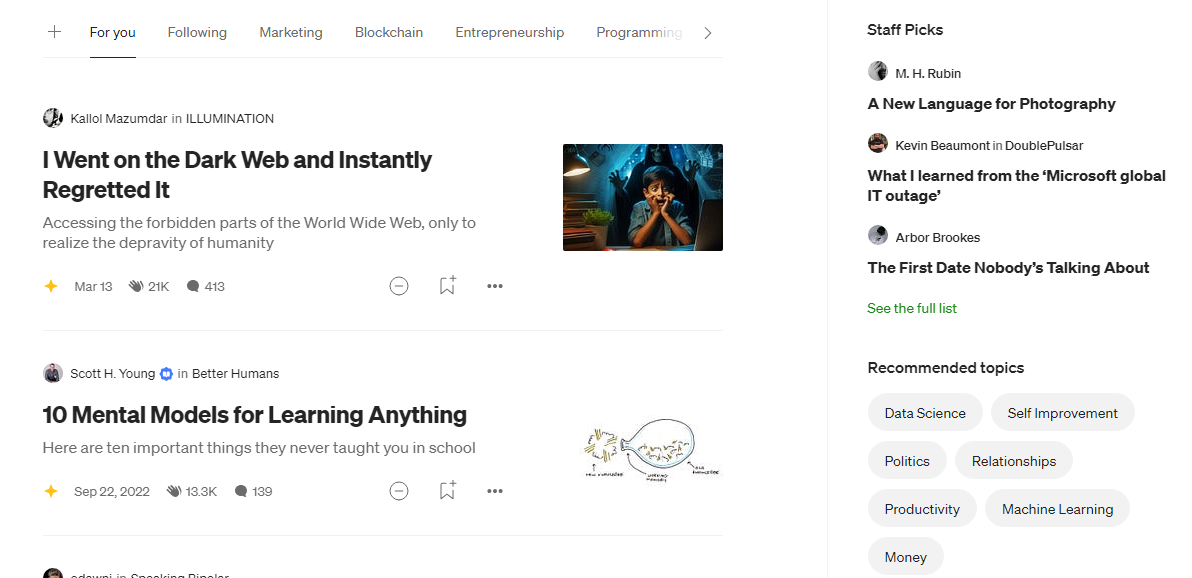
We live in a very visual world, but hey—you're here, reading this article, and that proves there's still some hope for those of us who prefer to read instead of watching. Written content refers to things like blog posts, ebooks, social media posts, and the like.
For blog posts, your best bet is to use Medium if you don't want to fiddle with making a website, but for ebooks, you can write them at your own pace and then sell them through Whop. Selling a single book will often pay you a whole lot more than many blog posts on Medium would.
Let's explore how writing works on some of the most popular platforms.
X (formerly known as Twitter)
Twitter—okay, fine, Elon, we'll call it X— is a more short-form written content platform, but you can still make money from it. For the $11 fee required to get X Premium or Premium+, you can unlock monetization options. This is an ad revenue-sharing model where you get paid for the number of views and engagement your posts get.
Unlocking monetization comes with a few requirements:
- You must have at least 500 followers
- You need to complete an identity verification process
- Lastly, you need to have at least 5 million organic impressions on your posts within the last 3 months
Once you're in the program, you can expect to make some money, but it probably won't be enough to live on. X Premium has a lower RPM than most of its video-based competitors, so while, for example, 270,000 views on a video might earn you four figures, getting that much on X only nets you around $300.
Medium
Medium is a platform that lets you publish more extensive pieces—think blog posts and short ebooks, not social media stuff. Medium has a mix of free and paid content, allowing writers to participate in revenue sharing from the subscription fee that members pay. The amount that you earn is based on how much time people spend reading your content.
On average, a writer on Medium earns $1.20 per post. If your writing is engaging and you're able to build a following, you can potentially earn thousands of dollars—but most writers don't. There are also bonuses for the highest-performing pieces, along with a feature that lets people make one-time donations as a type of tip.
Substack
Substack works similarly to Medium, allowing independent writers to share their work with their audience. Both platforms allow you to publish content for free, but Substack also has a paid content option that only subscribers can see.
While you can charge anything you like for your Substack subscription, it comes pre-set with default amounts. The defaults are $8/month, $80/year, or $150 for a founding subscription. The founding subscription serves as a VIP tier for people who just want to show their appreciation for your content by paying you more.
Short-form video content

These days, if a platform lets you post long-form videos, it most likely also lets you—or even encourages you to—post short-form videos, too. While the monetization is slightly different, some people prefer bite-sized media to more in-depth or time-consuming pieces. (Many do, in fact. Hence the popularity of TikTok and YouTube Shorts.)
Here are the most popular short-form content platforms, and how much they pay based on views alone.
- YouTube Shorts work off of the same ad revenue model as longer videos, and pay between $0.01 and $0.07 (1 to 7 cents) per 1,000 views. This is a lower RPM than longer videos.
- Instagram Reels no longer has a program to pay creators for Reels based on views, but having higher views can help you earn money through other means.
- TikTokers earn between 2 and 4 cents per 1,000 views.
- Snapchat only pays creators that it deems eligible for its monthly rewards. However, you may score some cash prizes through the Spotlight program.
- Facebook Stories have a payout of only 1 to 2 cents per 1,000 views on stories, and right now, the program is invite-only.
Even if short-form content doesn't pay as much, it can always be a great supplement to other kinds of content that you make! Many creators see their short videos go viral, which then invites the viewers to check out more of their content.
Long-form video content
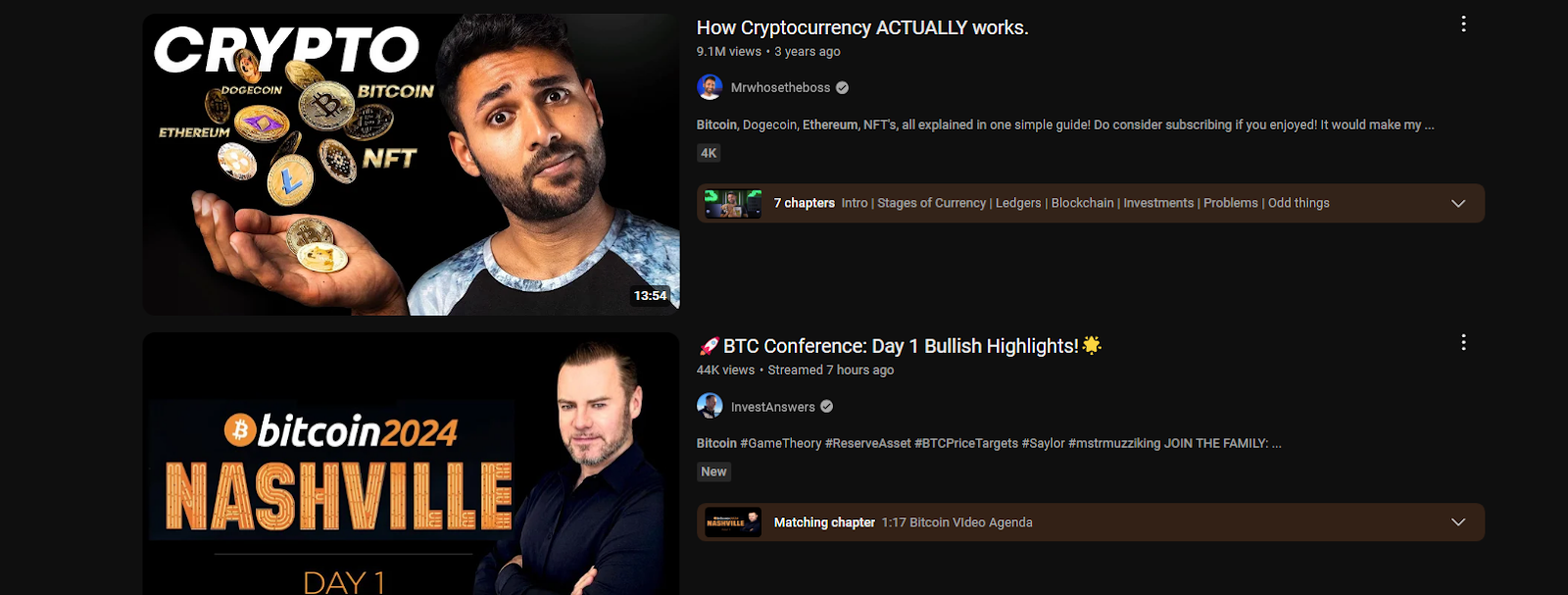
YouTube might be the king of long-form content, but all of the platforms we've already discussed also allow you to upload longer videos now. That wasn't always the case, though. Let's see how long a video you can upload on each platform!
- If you're verified on YouTube, you can upload super-long videos of up to 12 hours in length. Non-verified accounts have a max of 15 minutes.
- TikTok videos cap out at 60 minutes. (Imagine watching an hour-long TikTok—I'd never get anything done.)
- Facebook users can upload an impressive 240 minutes, or 4 hours.
- This may come as a surprise, but you can also upload an up to 4 hour-long video to X.
- Instagram allows in-feed videos to be up to 60 minutes long.
On platforms that depend on ad revenue for a payout, having longer content means more money because you can insert more ads. A YouTube video with five ad breaks will pay out more than a YouTube video with only one, as long as your content is engaging enough to ensure user retention.
Photo content
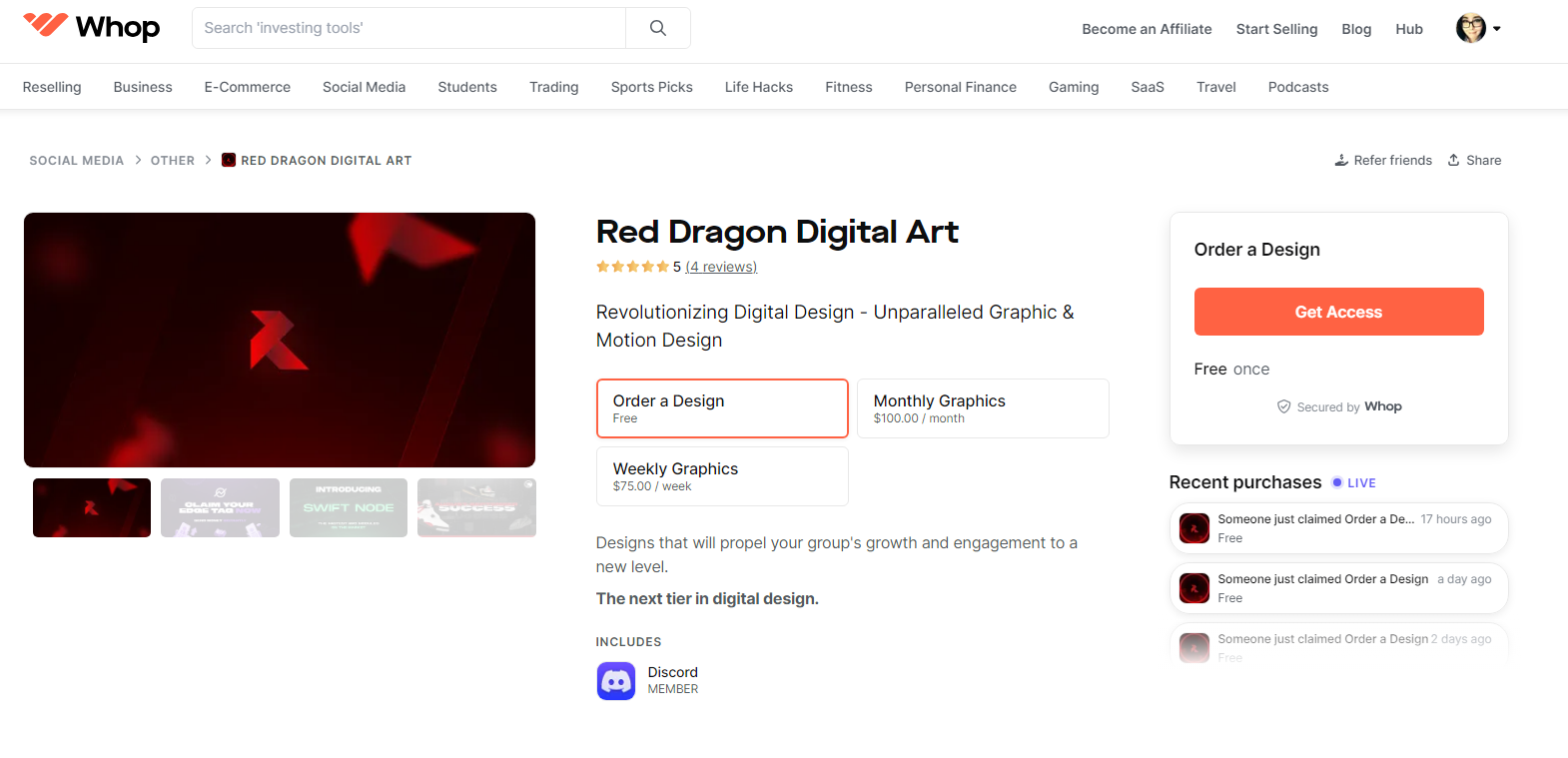
If you want to make money off of still images, you can probably go ahead and cross off YouTube and TikTok from the running. That doesn't mean you're out of luck, though.
Here are some platforms that will pay you for your photos.
- Pinterest does not facilitate direct payments, but it does have a Creator Fund that it can use to help creators develop content, as well as a Creator Inclusion Fund for underrepresented creators.
- You can make money on Instagram through sponsored and brand-deal photo posts.
- Snapchat's Spotlight feature lets you earn money on images you post based on the number of views you get.
- You can sell stock photography to websites like Shutterstock, Adobe Stock, Getty Images, iStock, and Alamy.
- You can also sell your photos or graphic designs as digital products through Whop.
Advertising content
Advertising, affiliate marketing, and brand partnerships are a content creator's best friends. All those Instagram influencers who try to sell you something are doing it because they're getting paid for it, and it usually pays better than any form of ad revenue.
Now, it's important to remember that no content creator should start out immediately trying to sell something. Once you've grown a community that trusts you and wants to know what you like, it can become a great income generator, though.
How much does advertising pay, anyway? Let's take a look, but remember—these are just ballpark figures.
- On Instagram, an influencer with a six-figure follower count can earn between $500 and $5,000 per sponsored post.
- YouTube content creators with up to 10,000 followers typically earn around $850 for sponsored posts. Having as many as 500,000 subscribers can net a Youtuber up to $6,000 or more, all depending on the niche!
- TikTok influencers can earn between $200 and $20,000 for a sponsored post depending on how many followers they have and the levels of engagement they regularly get.
- On Facebook, a sponsored post usually nets between $500 and $3,000, as long as you have at least 100,000 followers.
Artistic content
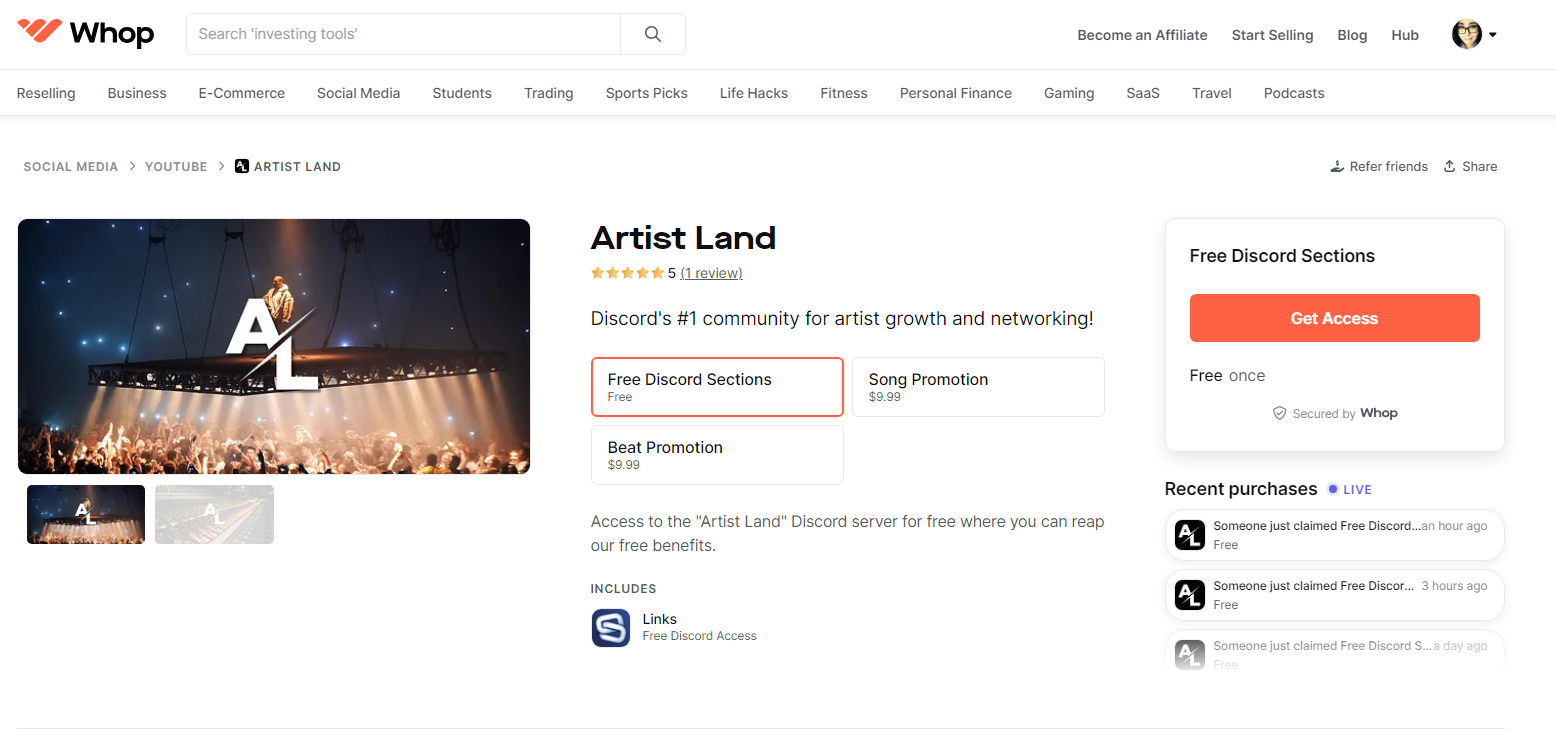
If you're an artist, you're a content creator, and there are lots of people out there who appreciate it. There are a couple of platforms dedicated to sharing your art, specifically, and others that can easily be used that way.
- Selling your art is easy with Whop. You can sell your designs, offer commissions, or even open up a paid community dedicated to your art.
- DeviantArt has a system in which users can give artists DeviantArt Points as a tip, and those points can be converted to money. However, DeviantArt has declined in popularity quite a lot over the years.
- ArtStation allows users to sell prints and various digital products through its marketplace. With ArtStation, you can also sell commissions, though the platform takes a 30% cut from standard members. If you buy an ArtStation Pro subscription, the revenue share is knocked down to 12%.
- You can also start streaming the process of creating your art through Twitch and earn money via subscriptions from users and donations made during streams.
Game streaming content
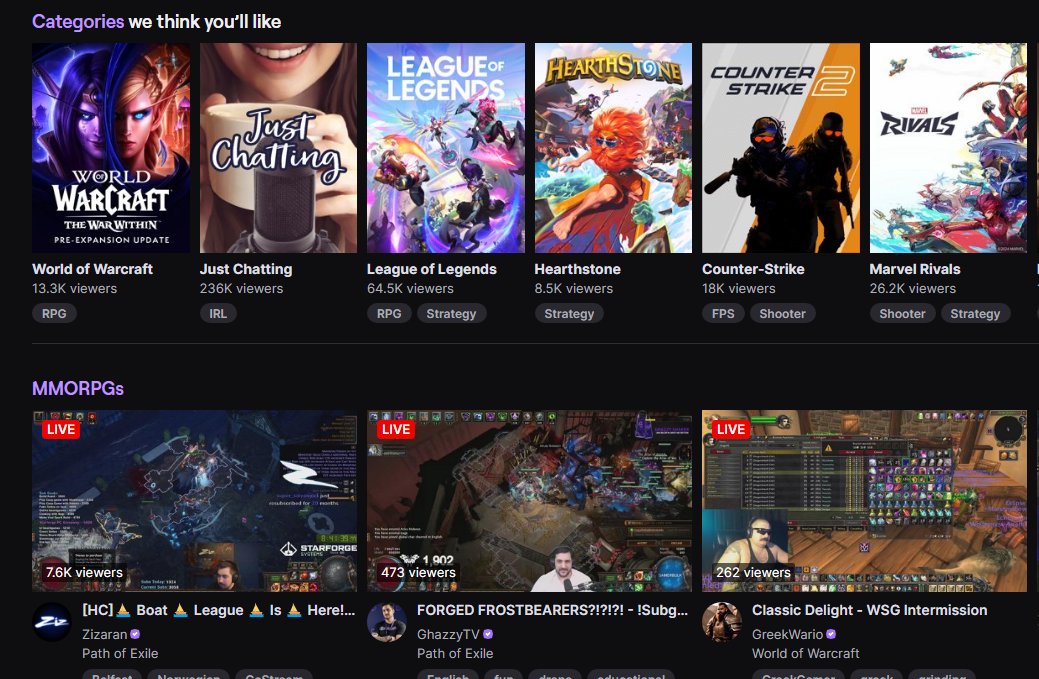
Who doesn't love watching someone play the same game for five hours straight? Platforms like Twitch or YouTube Gaming let you stream your favorite games (or even just random conversations) and engage with your viewers.
Twitch
Twitch has four main ways that you can make money. The first and most lucrative is through subscriptions.
Twitch subscriptions come at three price points ($4.99, $9.99, or $24.99), and most streamers are given a 50/50 split between what they get to keep and what the company takes. Once you've established yourself, you may be able to negotiate a better rate.
Your viewers can also purchase Bits and donate them to you throughout the stream. Each Bit can be exchanged for a cash value of $0.01, making it a nice supplement to subscription revenue! Viewers are also able to make direct donations through PayPal or Streamlabs.
As with most platforms, Twitch also allows you to have sponsored streams and run ad-supported segments. The amount you'd get would depend on how many people you normally stream to, how many followers you have, and how much engagement you get. High engagement is always a good tool for getting the most out of sponsorships!
Twitch may not be enough to replace your full-time job, but it can be a good side hustle if you already like to game.
Youtube Gaming
Youtube Gaming operates similarly to Twitch. Streamers can earn money from ads displayed on their streams, with a CPM based on the number of views. Unsurprisingly, the more ads are played, the more money you make.
Viewers can join a channel and pay a monthly membership rate (set by the streamer), and they can send Super Chats as a form of additional support. Super Chats allow the viewer to send a message that gets highlighted and kept at the top of the stream for a predetermined amount of time.
YouTube Gaming also allows sponsored content. Game creators will sometimes pay streamers to play new games on stream, or offer special drop incentives to viewers for watching a channel for a certain length of time.
How Do Content Creators Make Money?
Now that you know how much money content creators can make, it's time to get down to the nitty-gritty of exactly how they make this money.
Ad revenue
When it comes to ad revenue, most platforms use things like Google Adsense to display ads during your content—which you'll then get a cut out of. The final cut depends on how many people clicked through the ad to view the product and how many times the ad was viewed. Unfortunately, this means that various ad blockers will quickly become your nemesis.
Brand partnerships
Companies are always looking for ways to advertise their products, which makes the relationship between brands and influencers a no-brainer.
To find brand partnerships, you should reach out to companies that are relevant to your overall content. For example, if you're a gamer, you could work with PC hardware companies, game studios, or companies that make gaming gear. Even snack companies are fairly relevant.
Brand partnerships usually pay through affiliate commissions, per-post, per-video, or a flat fee. The more viewers you have, the more power you have to negotiate a higher cut of the sales.
Sponsorships
Similar to brand partnerships, sponsorships involve a company paying you to promote its products.
Sponsorships tend to be more of a long-term relationship than brand partnerships, and can involve more in-depth promotion. This means they also have the potential to pay out more in the long run, and you'll be using those products for a long time. (This is why some YouTubers will try to get you to install a certain VPN for months on end.)
Paid work
One of the more flexible ways for content creators to earn money is through paid work. Companies will pay for blog posts or articles to be written, graphics to be made, and even videos to be created.
Making money through commissioning your work to other outlets can be a good way to get started if you don't have the audience yet to support content creation on any one specific platform.
Subscriptions
A subscription is a way for your regular viewers to offer you money on a recurring basis. You do still need to upkeep your brand image and offer regular content, but the guarantee of a certain number of subscriptions makes the process a little less stressful.
Donations
Most platforms allow viewers a way to offer one-time donations to content creators. This often comes down to proprietary tokens (like Bits on Twitch, or Diamonds on Instagram); direct donations through a website like Stripe, Ko-fi, or PayPal; or purchasing incentives like having their message on screen via SuperChat on YouTube.
Merchandise
Once you've built yourself a bit of an audience, selling merch becomes a great way to make extra money. This can be apparel, mugs, totes, bracelets, or, better yet, make digital products like graphic designs or exclusive videos.
What Is the Biggest Impact on a Content Creator’s Earnings?
We've established that some content creators are swimming in money. For many, it's not quite as peachy, but there are ways to maximize your income over time. The first step is to figure out what makes you the most money.
There are a lot of factors that contribute to what you are - or aren't - able to earn. Some of these are things you can work on and improve on, while some you may just have to adapt to. Here are the most common contributors to a content creator's earnings!
- Location. Unfortunately, some platforms have location-based restrictions in place. These restrictions may involve what content can be shared in certain places, whether monetization is possible, or even entire platforms being restricted.
- Audience size. Virtually every platform takes audience size into account. After all, the more people follow you, the more lucrative your content is to that platform. This rule applies to everything in content creation, from ad revenue to scoring brand partnerships.
- Diversity. Diversifying your content can give you a well-rounded audience. It allows you to appeal to different niches. On the other hand, you still should have a defined niche so as not to confuse various algorithms (and your viewers).
- Platform. Not every platform will end in big bucks for every type of creator. For example, short-form videos do well on TikTok, long-form content is great for YouTube, and photos perform better on Instagram. In the end, you're better off using a mix of all three (and more).
How You Can Make Money as a Content Creator
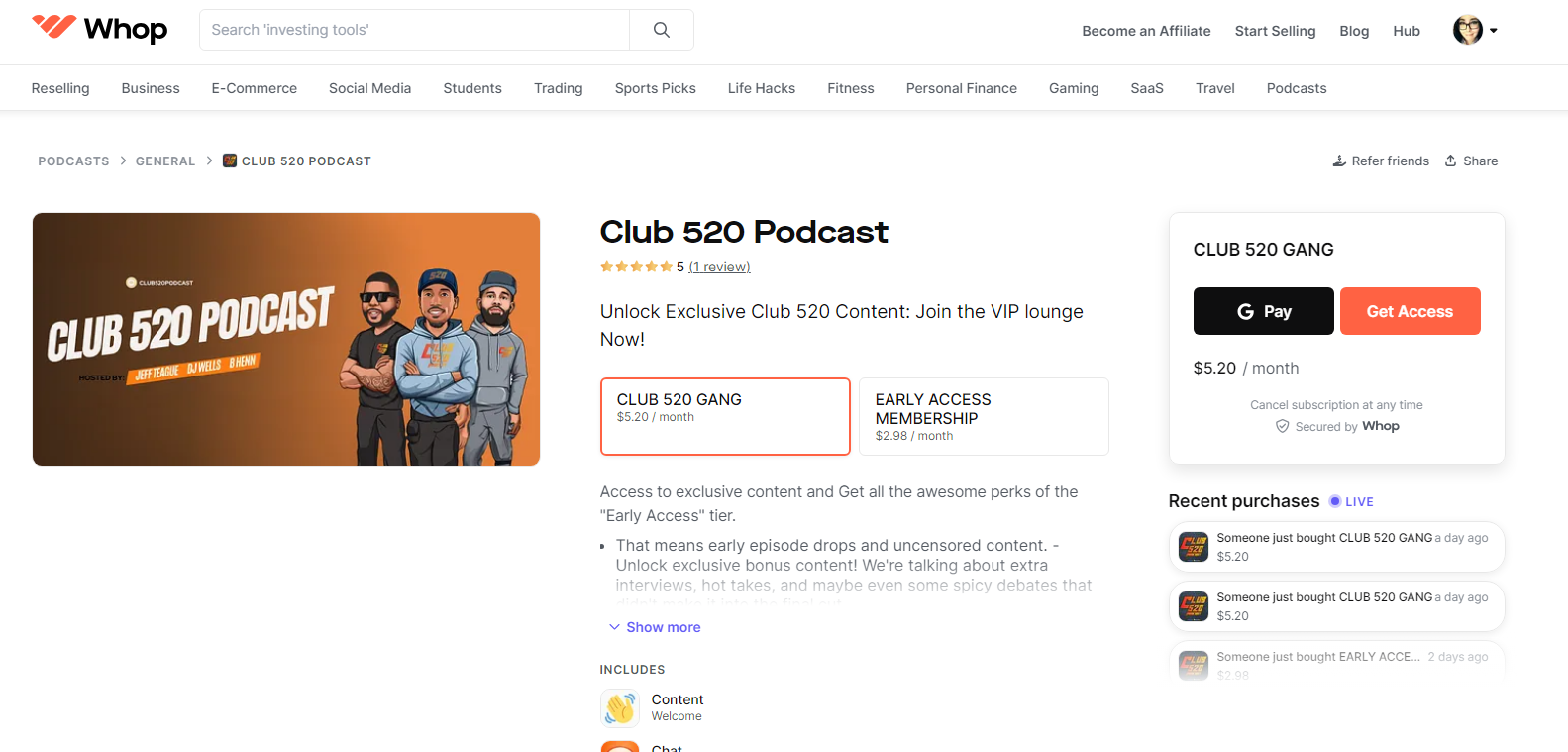
No matter which platform you choose to make content on, you'll want to follow the same basic steps to start earning money. The trick is to make sure your content is interesting and attention-grabbing enough that these steps help you to your full potential!
Here are the five steps to success as a content creator.
Find your niche
As I mentioned before, you need some sort of a niche before you start creating content. If you just dip into every single interest of yours, you'll confuse your viewers and possibly put them off. It's better to decide on one general area of interest, and once you have some followers, you can branch out into two types of content: niche-based and personal content that lets your audience get to know you better.
To narrow down a niche, start by writing out your interests and deciding on some that you'd love to share content on first. Then, scope out the competition on your platforms of choice. You can also use tools like Google Trends, Ahrefs, SEMrush, or analytics software to determine whether a niche is profitable or not.
- 200+ Online Course Ideas Across All Niches
- 22 Great Ecommerce Niche Blogs
- 45 Most Profitable Blog Niche Ideas (and How to Monetize Them)
Build up an engaged community
I know—easier said than done, but building an engaged community is the ultimate key to making money as a content creator. Having viewers who trust your word and care about your content means brand partnerships, ad revenue, views, and merch sales.
To do this, create high-quality content consistently and engage with your audience. Respond to comments and emails, and offer video shout-outs to make your followers feel like they know you better.
Create a portfolio
Create a portfolio of your work that you can share with brands in the next step of your journey. If you want to be a YouTuber, this can be a backlog of videos. On Instagram, this can be a grid of posts that show your range of content. Just make sure that brands can see what you're about at a glance, and don't forget to also include numbers like follower counts, minutes or hours viewed, and monthly earnings.
Approach brands and influencers for deals and collaborations
Once you have developed that engaged community and you have content to show off, approach brands and influencers for deals and collaborations. Pick your brands carefully based on your niche, the brand's values, and your follower counts.
Smaller influencers often have better luck with smaller brands. For example, as a nano influencer in the fitness space, you might not get a response if you hit up a big brand like Nike. Look for brands with smaller social media follower counts and approach those instead.
Create multiple revenue streams
Settling for a single stream of revenue as a content creator may often stunt your growth. Instead of counting on just one income source, such as ad revenue from YouTube, you're much better off diversifying.
Alongside your social media and content creation, you can try out some of the following:
- Set up a paid community for your followers and charge money for it
- Offer one-on-one calls or live events through a platform like Whop
- Work with brands and other influencers
- Write ebooks
- Create courses
- Start a podcast
- Run a newsletter
- Sell merch
- Offer exclusive content on a subscription basis
The more you diversify, the better.
Start selling!
Once you've got yourself some followers, your best bet is to try some of the methods I listed above and start earning more money. That way, you won't have to rely on the ebb and flow of social media. Instead, you'll be an entrepreneur who is fully in charge of their income.
What’s the Best Way for a Content Creator to Make Money?
With so many different platforms, you might still be here, scratching your head as to which one will make you the most money. We'll let you in on a secret: there's no single platform that anyone can recommend.
This is because there's no one-size-fits-all answer for a content creator. It's a creative field, and as such, you'll need to determine the platforms that best suit your particular content.
To determine your path, you'll need to choose a good niche, pick the platforms that align with your content plan, and then just start creating. It'll take time to start getting followers, but you'll never know how long it'll take until you try.
However, we do have one crucial piece of advice: the best way to make money as a content creator is to not settle for a single source of income.
Why? Well, for starters, it takes time to build up a solid monthly income if you're relying strictly on one platform. YouTubers sometimes wait for months, or even years, for their content to be monetized. Even if you've got a channel that's doing great, you're still controlled by our robot overlords and their ever-changing algorithms. Ad revenue may change from one day to the next.
Diversifying both lets you scale up your content creation business and keeps you safe in the event that something goes wrong on one of your platforms. It's honestly the #1 to make money as a content creator.
One great way to build an engaged community that centers around your content niche is to use Whop. With Whop, you have the option of multiple revenue streams all in one handy platform, plus a place for your community to gather and grow together.
Why Whop Is the Best Choice for Content Creators
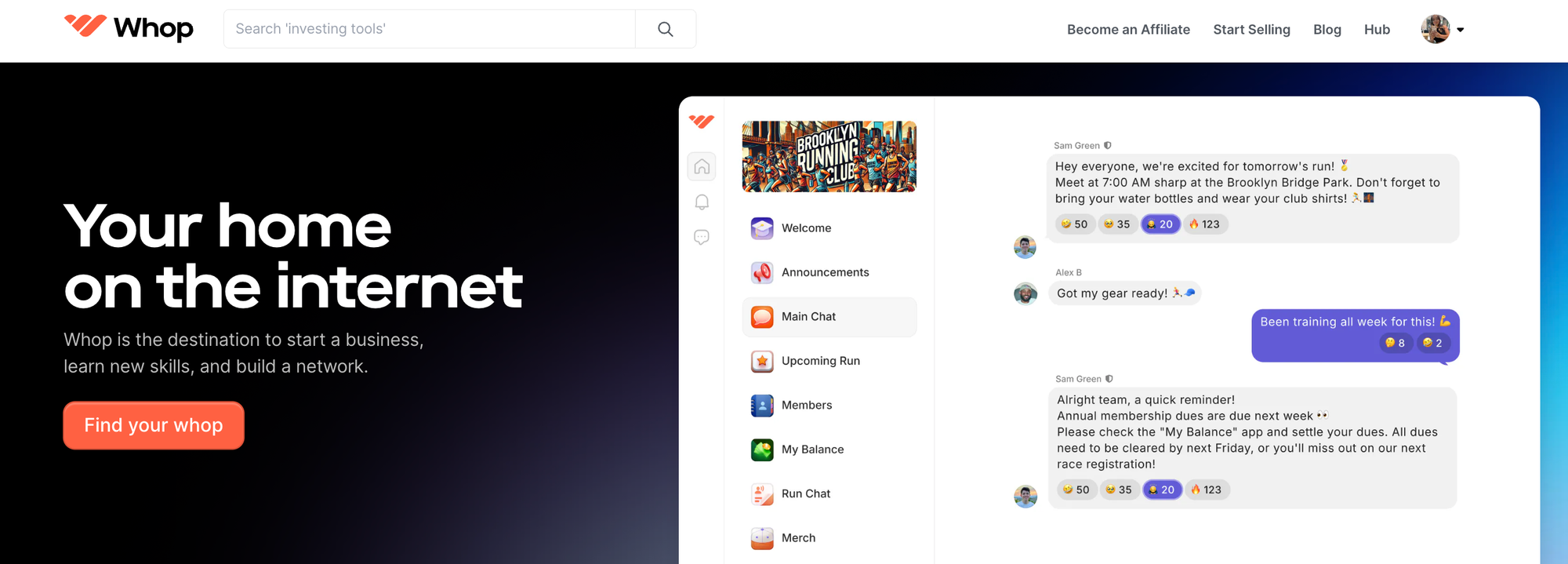
So, about those extra income streams … how can Whop help?
With Whop, you can sign up and start selling in minutes. What will you be selling? Here are just some of your options:
- Access to your own private community
- Courses and ebooks
- Digital downloads, such as designs based on your brand
- Exclusive content, such as videos, podcasts, or video shout-outs
- Software and bots, if you make and/or use any
- Live calls with your followers
- Webinars and events
- Access to Chat and Forums
- Podcasts
- Newsletters
- And so much more!
Whop knows your unique needs as a content creator, and it rises to meet them every time. In fact, Whop is already home to successful content creators like musical artist Boogie, YouTuber Adam Botkin, photographer Lloyd Wakefield, and the Club 520 podcast.
These content creators have already discovered that Whop can be the perfect central location for monetization and growing your audience. This is because Whop takes care of the payment side of things, lets you set up pricing tiers and subscriptions, and automates a lot of what you'd otherwise be doing yourself.
Simply put: Whop lets you focus on growing your brand all the while helping you make money.
But exactly how much money can you make through Whop? We have answers for you on that too! Many Whop creators make upwards of $2,000 a month, with top creators on the platform earning $250,000 per month.
Whop not only does all of this, but it only takes a 3% cut, meaning with Whop you'll take home 97% of everything your content earns you. Signing up takes less than 10 minutes, so get started today - the sooner you join Whop, the sooner you can start earning.


